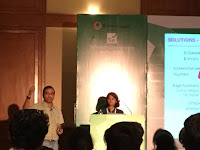ATDD = Anti-Trust Driven Development
BDD = Benefit Driven Development
CDD = Cribbing Driven Development
CDD = Control Driven Development
IDD = Indifference Driven Development
ODD = Optimism Driven Development
PDD = Punishment Driven Development
RDD = Reporting Driven Development
SDD = Slide(s) Driven Development
SDD = Short-cut Driven Development
A few variants kindly shared by the community members:
FDD = Food Driven Development
SGDD = Style Guide Driven Development http://styleguidedrivendevelopment.net/
To recap, here is the original list
ATDD = Acceptance Test Driven Development
BDD = Behavior / Business Driven Development
BDD = Blame Driven Development
BDD = Buzzword Driven Development
CDD = Complexity Driven Development
CDD = Calendar Driven Development
CDD = Checklist Driven Development
CDD = Chadi (stick) Driven Development
CDD = Constraint Driven Development
CPDD / CDD = Copy-Paste Driven Development
DDD = Demo Driven Development
DDD = Date Driven Development
DDD = Defect Driven Development
DDD = Document (PRD) Driven Development
EDD = Escalation Driven Development
EDD = Estimation Driven Development
EDD = Excel Driven Development
FDD = Fake-it Driven Development
FDD = Fashion Driven Development
FDD = Fear Driven Development
FDD = Footwear (punishment) Driven Development
HDD = Hope Driven Development (fingers crossed)
IDD = Instinct Driven Development
IDD = Issue Driven Development
JDD = Jira Driven Development
MDD = Metrics Driven Development
MDD = Manager / Management Driven Development
MDD = Mandate Driven Development
MDD = Meeting Driven Development
NDD = No-Drive (towards) Development
PDD = Patch(work) Driven Development
PDD = Plan Driven Development
PDD = Prayer Driven Development
PDD = Process Driven Development
PDD = Profanity Driven Development
RDD = Resource Driven Development
RDD = Resume Driven Development
SDD = Stackoverflow Driven Development
SDD = Stakeholder Driven Development
SDD = Swallow-exceptions Driven Development
SDD = Sprint Driven Development
TDD = Trust Driven Development
VDD = Velocity Driven Development




